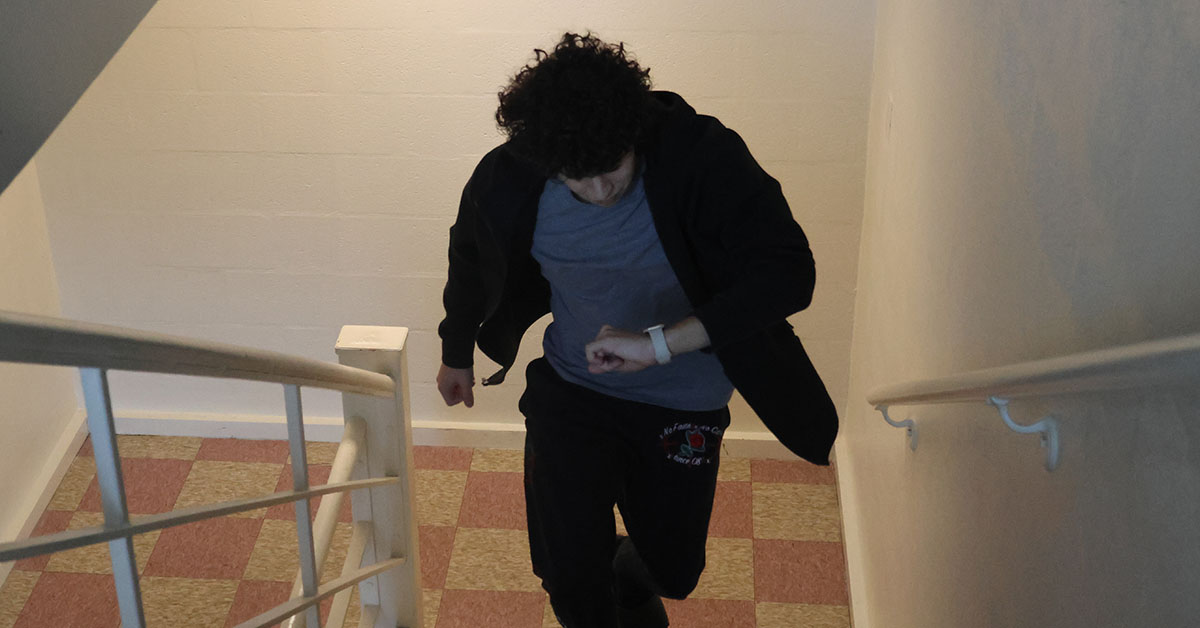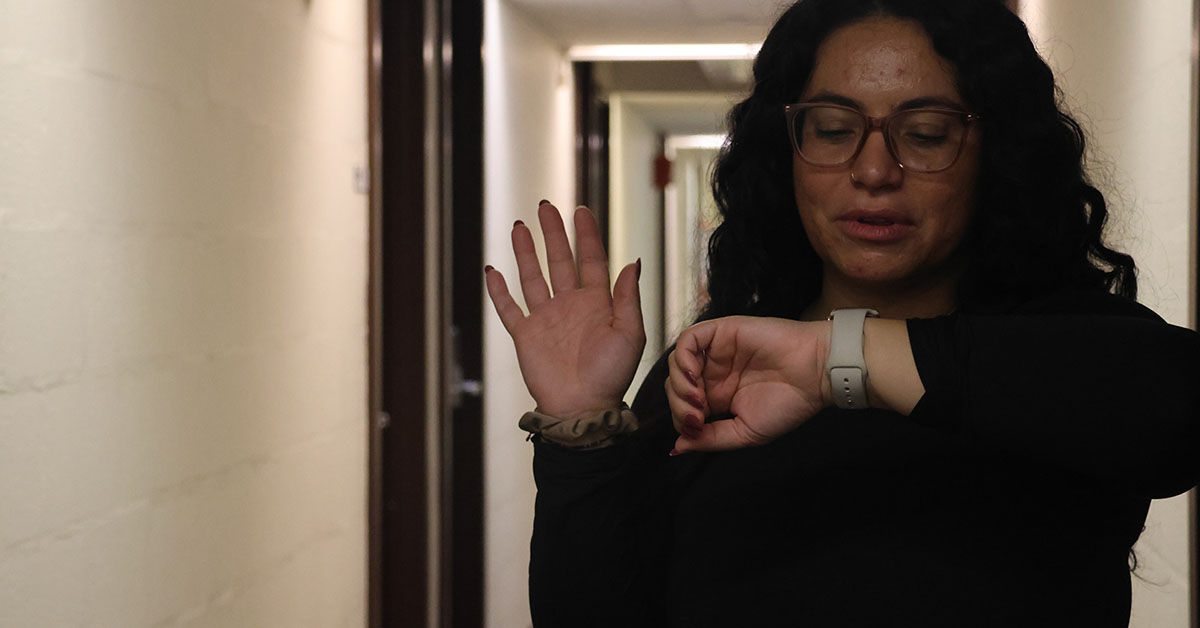Ava Boyd
I am a freshman student, majoring in sports journalism. I am from California and lived in California my whole life, until coming to Indiana for school.
By Kennedy Gaynor, Charlie McLain, Ava Boyd, and Sofie Yurewicz
BLOOMINGTON—Indiana University football is undefeated and having its best season in program history, and NIL is thriving for hoosier athletes.
It’s Saturday, November 2, 2024. The Indiana Hoosiers are in East Lansing to take on the Michigan State Spartans for the Old Brass Spittoon, but that’s not all the Hoosiers are looking for. IU football has started 8-0 for just the second time in program history and is seeking their first ever 9-0 start—but how did the Hoosiers get here?

A program that’s won just nine games over their previous three seasons is about to win their ninth game of the 2024 season in as many games played. One of the greatest turnarounds in college football history is taking place right here in Bloomington, but what is the key to this sudden success? The answer is Name Image and Likeness (NIL), the recent initiative in college sports that allows college athletes to be paid for their brand. “Name, image, and likeness is another set of words for right of publicity,” says Dr. Galen Clavio; the head of IU’s Sports Media program.
With recent Name, Image, and Likeness (NIL) regulations, Indiana University athletes now have new ways to profit from their personal brands, gaining financial support and career-building opportunities while still in college. Proponents argue that NIL reduces athletes’ financial stress, allowing them to focus more on academics and sports, while critics worry that NIL could shift focus away from team dedication. Mika Millbach, a longtime IU supporter, believes these deals are vital for athletes’ growth both on and off the field, asserting they allow students to reach their full potential without the financial pressures many face.

Brown University’s sophomore quarterback James Murphy shared his insight on the new landscape of NIL. He shared valuable information about the opportunities and challenges athletes at the collegiate level face because of NIL—something he knows very well, having been affected. In an interview with Murphy, he says “NIL has completely changed the landscape of college sports as a whole. Athletes are not only finally getting financially rewarded for their hard work and sacrifice- but it also has played a big role in recruiting more student athletes as well. Schools that can offer more money to the athletes through collectives and brand deals will be more appealing during the recruiting process.”
Mika Millbach, best friend of an IU professor and massive Indiana sports fan, believes that NIL deals are vital for the Indiana football team to reach its full potential. He asserts that these agreements not only offer athletes financial support but also contribute to their overall education by lessening financial stress, allowing them to focus more on academics. “I think the program has had an incredible impact and without this program I think that the students would suffer…” he said. For IU, Millbach argues, NIL could mean attracting more talented athletes and boosting the team’s performance, which would ultimately bring more recognition and funding to the university. Millbach also believes that NIL leads to more educated athletes by the persuasion of the deal.
Two junior students, Kate and Olivia, admitted they didn’t know much about NIL or its impact on student-athletes but were eager to share their thoughts. “I do not keep up with football much,” Allie noted, “but I have noticed that our team is continuing to succeed and are leading the season 6-0.” This led Olivia to ask Kate if the team’s winning streak might have more to do with coaching than NIL. After a brief discussion, they both concluded that Coach Cignetti’s leadership, rather than NIL deals, is likely the driving force behind the team’s recent success. Their perspective suggests that factors beyond NIL, like strong coaching, could play a larger role in team performance, providing a counterpoint to the idea that NIL alone is shaping athletic outcomes.

Football’s second-string quarterback, Tayven Jackson, shared his insights on how NIL has positively impacted student-athletes, especially those from challenging backgrounds. “A lot of my teammates come from a rough background, and so now that they can make money, they can help their families and their cousins and people that are sick in their families,” Jackson explained. For Jackson, NIL deals go beyond personal gain—they offer student-athletes a chance to support loved ones and make a difference off the field. He also noted the importance of being wise with NIL opportunities, advising fellow athletes to work with agents to secure the right deals and invest earnings responsibly rather than spending recklessly. In the long term, Jackson hopes to see NIL deals that help athletes promote their brands and use these platforms meaningfully, rather than just providing a paycheck. His perspective showcases NIL as a unique opportunity for financial growth, family support, and career preparation, but one that also requires thoughtful management.
As Indiana University’s football team makes history with an unprecedented winning season, the role of Name, Image, and Likeness (NIL) in their success has sparked discussions across the campus and beyond. While some attribute the team’s performance to skilled coaching and strong leadership, others, like quarterback Tayven Jackson and IU supporter Mika Millbach, believe NIL has provided athletes with essential financial support and opportunities to grow both on and off the field. NIL has not only helped players like Jackson support their families but has also created a new pathway for student-athletes to build their futures beyond college sports. As NIL continues to evolve, its impact on programs like IU’s football team highlights a transformative shift in college athletics, one that empowers athletes to succeed academically, athletically, and professionally. Whether through coaching or NIL, the Hoosiers’ extraordinary season is a testament to the power of investing in student-athletes, marking an exciting new era for Indiana University sports.
Tayven Jackson, sophomore quarterback at IU, opens up about his experiences with NIL and its impact on college athletes. In this interview, he offers valuable insights on navigating the new landscape of student-athlete compensation.
In a series of street interviews, people connected to IU share their thoughts on the changing landscape of NIL. Their perspectives highlight how NIL is shaping the future of student-athletes and the university community.
###
Media Contacts
Bailey Hawkesby-Mullins
Ava Boyd
Stella Klaus
CUPERTINO California (Spet. 9,2014) – CEO of Apple, Tim Cook, took to the stage to announce the release of the new apple watch Tuesday night in Cupertino California, where Apple’s headquarters are located.
Cook excitedly introduced the new smart watch to an eager audience, telling them that they have one more thing. He finally unveiled the watch by showing a video that highlighted its elegant appearance and just some of its many innovative features.
“We love to make technology more personal and allow our users to do things that they could have never imagined,” Cook said. “We believe this product will redefine what people expect from its category.”

The first feature of the new Apple Watch that Cook described is what is called the digital crown. This feature helps you zoom and scroll on the tiny screen of the watch. The apple team incorporated as much functionality and style into this product as they could.
“The Apple Watch is made to be worn, and it can be worn all day for any occasion,” Cook said. “It’s as much about personal technology as it is style and taste.”
The Apple Watch is made for everyone and is customizable to anyone’s taste. Senior vice president of design, Jony Ive, demonstrated the watches’ customizability in a video. You can choose from a wide range of watch faces, even personalizing what they look like and what they can do. In addition to this you can switch out the strap choosing from six different types of straps and sizes. They even created three different collections of watches to choose from; the Apple Watch, the Apple Watch Sport, and the Apple Watch Edition.
“We designed Apple Watch as a whole range of products enabling millions of unique designs, and unparalleled personalization both in appearance and capability,” Ive said.

After Ive explained the personalization of the watch, Cook invited Vice President of technology at Apple, Kevin Lynch, to do the very first live demonstration of the watch.
Apple Watch pairs with your iPhone and by pressing the digital crown it can take you to an array of apps of your choosing on the home screen. Lynch first showed how to change your watch face to your liking. There are many options including the astronomy face, with this face it shows you where you are on the Earth, then you can fly to the moon and it will show you what phase the moon is in. They even scheduled the event on the full moon to show how great the astronomy watch face can look.
Another very customizable part of the Apple Watch that Lynch demonstrated is glances. Glances is a way to look at other information of your choosing by swiping up from the bottom of your watch face. Glances can be anything you choose like calendar or reminders or even from third party apps.
Lynch then showed the notification and replying process of the Apple Watch. The watch has a very convenient way of receiving notifications and replying to them called Quick Word. Quick Word takes messages, then forms responses you can choose from and easily respond with one click.
Communication is a huge part of the Apple Watch, and now you can use more than words to communicate with your friends. By just a simple tap of the screen you can reach your friends, you can even send something as unique as your heartbeat, which is read from your wrist.
Smart watches have been integrating fitness into their watch design, so Apple did the same thing plus more. They added two new apps to the watch to help users with their health and fitness. One of these apps being the fitness app, which monitors all of your movement throughout the day. The other one being the workout app, which helps you set specific workout goals.
“Apple builds great products that enrich people’s lives, and arguably we can take that to a whole new level with the Apple Watch,” Cook said.
Kevin Lynch, Apple’s senior vice president of design, demonstrates the new Apple Watches customizable features. Apple offers a wide variety of clock faces suitable for all users.
Tim Cook, surprisingly announces the new Apple product creating a positive response from the audience. The “one more thing” was later to be announced as the Apple Watch.
###